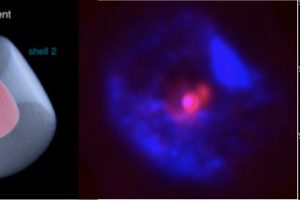The detection of the neutron star in the core of SN1987A confirmed by a recent study

SN1987A, the supernova exploded in the Large Magellanic Cloud (at about 170000 light years of distance) on February 23rd 1987, was an iconic event for the study of supernovae and supernova remnants. In fact, it is the only case where it was possible to observe (with telescopes) the explosion and to follow with periodic observations the evolution of the supernova
» Read more








